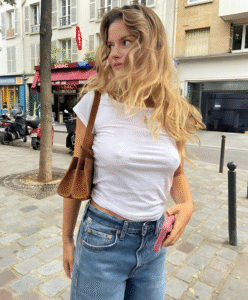🔥 The Edge of Curiosity: What We See When We Dare to Look
“Don’t look if you can’t handle it.” It’s a phrase that pulses with tension. It dares us to cross a threshold, to peek behind the curtain, to confront something raw, unsettling, or deeply real. It’s the verbal equivalent of a flashing red light—warning and tempting us at the same time.
At its core, this phrase is about boundaries. Emotional boundaries. Psychological thresholds. Cultural taboos. It’s used when something is too intense, too graphic, too honest, or too vulnerable. It might be a disturbing image, a painful truth, or a moment of unfiltered emotion. And yet, the very act of saying “don’t look” almost guarantees that we will.
🧠 The Psychology of Forbidden Vision
Human beings are wired to be curious. When we’re told not to look, our brains light up with questions: Why not? What’s there? What will happen if I do? This is known as reactance—a psychological response where we resist restrictions on our freedom. The more we’re told not to do something, the more we want to do it.
This is why “Don’t look if you can’t handle it” is so powerful. It doesn’t just warn us—it activates us. It forces us to confront our own limits. Are we brave enough? Are we ready? And if we do look, what does that say about us?
🎭 In Art and Media: The Power of Provocation
In visual art, this phrase often accompanies works that are emotionally intense or visually shocking. Think of Francis Bacon’s distorted portraits, Marina Abramović’s performance pieces, or even the raw photography of Nan Goldin. These artists don’t just show—they expose. They ask viewers to sit with discomfort, to witness pain, vulnerability, and truth.
In film and television, the phrase might precede a violent scene, a moment of emotional breakdown, or a twist that changes everything. It’s used to prepare the audience—or to provoke them. In horror, it’s a staple. In drama, it’s a turning point. In satire, it’s a punchline.
Even in comedy, the phrase can be used ironically. A character might say it before revealing something absurd or trivial. This contrast between expectation and reality creates humor—but it also highlights how conditioned we are to expect intensity when we hear those words.
🪞 The Mirror Effect: What We See Reflects Who We Are
When we choose to look, we’re not just seeing an image or a scene—we’re seeing ourselves. Our reactions reveal our values, our fears, our empathy. Do we flinch? Do we laugh? Do we feel compelled to act?
This is especially true in social media, where “Don’t look if you can’t handle it” often precedes viral content. A shocking transformation. A political rant. A deeply personal confession. These moments are raw and real—and they invite us to engage, judge, or reflect.
But they also raise ethical questions. Are we consuming pain for entertainment? Are we respecting the vulnerability of others? Are we desensitized, or are we still capable of compassion?
⚔️ Cultural Tension: Between Censorship and Exposure
In some cultures, the phrase is used to protect. To shield children from violence. To preserve modesty. To maintain decorum. In others, it’s used to challenge. To push boundaries. To provoke thought.
German visual culture, for example, often embraces emotional depth and philosophical tension. Artists like Käthe Kollwitz and Anselm Kiefer don’t shy away from grief, war, or existential dread. Their work says: Look—even if it hurts. Because sometimes, pain is the path to truth.
In contrast, American pop culture often uses the phrase to hype content. It’s a marketing tool. A way to build suspense. But even here, it taps into something primal: our desire to see what lies beyond the veil.
🧩 The Layers of Meaning: More Than Just a Warning
“Don’t look if you can’t handle it” can also be metaphorical. It might refer to emotional truths—like confronting a breakup, facing a diagnosis, or reading a letter from someone we’ve lost. In these moments, the “image” isn’t visual—it’s internal. And the act of looking is an act of courage.
It can also be used in relationships. Someone might say it before revealing their true feelings, their past, or their trauma. It’s a way of saying: This is me, unfiltered. If you can’t handle it, don’t come closer. It’s a boundary—but also an invitation.
🌪️ The Risk and the Reward
So what happens when we do look? Sometimes, we’re disturbed. Sometimes, we’re enlightened. Sometimes, we’re changed.
Looking is an act of vulnerability. It means opening ourselves to experience, emotion, and transformation. It means risking discomfort for the sake of understanding. And in a world that often values distraction over depth, that’s a radical act.
💬 A Final Reflection
“Don’t look if you can’t handle it” is more than a phrase. It’s a challenge to be present. To engage. To feel. It asks us to confront the raw edges of reality—and to decide whether we’re ready.
But maybe the real question isn’t whether we can handle it. Maybe it’s whether we’re willing to grow through it. Because sometimes, the things we’re afraid to see are the very things we need to face.
So go ahead. Look. And if it shakes you—good. That means you’re alive.


